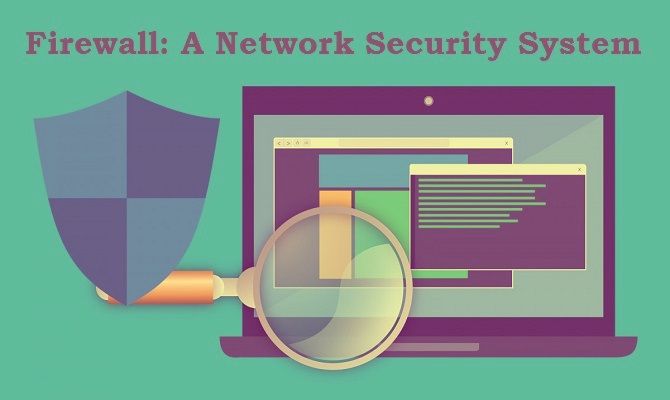In the world of technology, some tools become so ingrained in our daily lives that we almost take them for granted. For many of us in the web hosting industry, the ConfigServer Security & Firewall (CSF) was one of those tools. For well over a decade, it served as the trusted guardian for countless Linux servers, helping to keep businesses of all sizes safe from digital threats.
At Softlink Options, we relied on CSF for years because, quite simply, it was the gold standard for its time. It was a powerful, intelligent, and highly effective firewall that played a crucial role in maintaining the security and reliability of our services.
So, why was CSF such an excellent firewall?
1. It Made Complex Security Simple
Underneath the hood of every Linux server is a powerful but complex firewall system called iptables. Manually managing iptables rules requires deep technical knowledge and can be a painstaking process. CSF changed the game. It acted as an intuitive, user-friendly interface that allowed system administrators to manage sophisticated security rules with ease. It put powerful controls at our fingertips, simplifying a complex task and making it far more efficient.
2. The Login Failure Daemon (LFD): A Brute-Force Guardian
One of CSF’s most impressive and valuable features was the Login Failure Daemon (LFD). While other firewalls might check for failed login attempts every few minutes, LFD was a continuous, real-time defender. It constantly monitored logs for services like SSH, FTP, and cPanel. When it detected a brute-force attack (repeated, failed login attempts from a single IP address), it didn’t hesitate. It would instantly block the offending IP, stopping the attack in its tracks. This proactive, automated defense was a powerful deterrent that saved countless servers from compromise.
3. Comprehensive and Highly Customizable Protection
CSF wasn’t a one-trick pony. Its robust suite of features allowed for comprehensive protection tailored to specific needs.
- Granular Port Control: It gave us full control over which ports were open or closed, allowing us to lock down a server and open only the ports essential for our services to run.
- Country Blocking: This feature was a game-changer. We could easily block entire countries known for hosting large volumes of cyber threats, significantly reducing the amount of malicious traffic reaching our servers.
- Port Flood Protection: CSF was able to detect and mitigate common Denial of Service (DoS) attacks by limiting the number of connections from a single IP address.
- Seamless Control Panel Integration: Its seamless integration with control panels like cPanel made it a beloved tool in the hosting industry, providing a centralized and familiar interface for managing security.
The Next Chapter: Why Server Security Must Evolve
The cybersecurity landscape never stands still. While CSF was a fantastic solution for its time, the threats we face today are more advanced and require a new generation of tools. As announced by its developers, CSF will no longer receive security updates, bug fixes, or new features after August 31, 2025. A firewall that is no longer maintained is, unfortunately, a risk no one should take. You can find the official announcement about the closure here: ConfigServer Services Announcement.
For businesses still using CSF, it’s time to responsibly migrate to a modern, actively supported security solution. The good news is that there are powerful, cutting-edge options available to take server security to the next level.
Here are the top three migration paths from CSF:
Option 1: The All-in-One Security Suite (Our Recommendation)
This is the most comprehensive and popular choice for hosting providers today. Instead of a single firewall, it’s an entire security ecosystem. The leading example is Imunify360, which we have successfully migrated to. It combines:
- A powerful Web Application Firewall (WAF): Protects websites from common exploits and attacks.
- Real-Time Malware Scanning: Constantly scans files for malware as they are uploaded or modified, with automatic cleanup.
- Intrusion Detection and Prevention (IDS/IPS): Monitors logs and traffic for suspicious activity and blocks it instantly.
- Automated Patching: Automatically patches vulnerabilities in popular software like WordPress and PHP without server reboots.
For more information, you can visit the official Imunify360 website. This option is perfect for businesses that want hands-off, powerful, and proactive protection.
Option 2: The Open-Source Toolkit
For technical users who prefer to manage their own servers, a combination of specialized open-source tools can be a great alternative. This approach involves replacing CSF’s core functionalities with dedicated applications. The most common combination is:
fail2ban: This tool is an excellent replacement for CSF’s Login Failure Daemon (LFD). It monitors logs for failed login attempts and automatically bans malicious IPs, just like CSF’s LFD.ufw(Uncomplicated Firewall): A user-friendly front-end foriptablesthat makes managing basic firewall rules much simpler than using the complex command-line tool directly.
You can learn more about this tool at the official Fail2ban website. This option provides a solid level of protection but requires more hands-on configuration and maintenance.
Option 3: The Cloud-Based Layer
A third option is to use a cloud-based solution that sits in front of your server. Services like Cloudflare offer a powerful layer of security and performance. While not a direct replacement for a server-side firewall, a cloud-based WAF and DDoS mitigation service can filter out a significant portion of malicious traffic before it ever reaches your server. This works best when used in combination with a server-side firewall to create a multi-layered defense.
You can find more information about their security services on the official Cloudflare website.
Our Commitment to a Secure Future
The era of CSF was a great one, but in cybersecurity, progress is paramount. By proactively migrating to a solution like Imunify360, we are ensuring that we continue to provide the highest level of security available today, protecting your digital assets from the threats of tomorrow.
If your business is still using an unsupported firewall, it’s time to upgrade.
Contact us today to secure your future with our cutting-edge, Imunify360-powered solutions!

